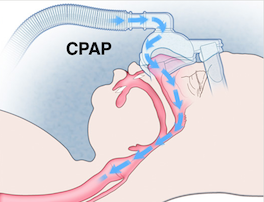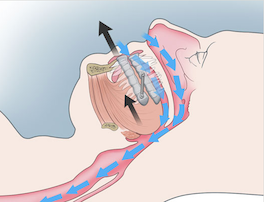The Takeaway
Nonsurgical treatment for obstructive sleep apnea can include weight loss, positional therapy, oral appliances, and oxygen, but positive airway pressure (PAP) treatment is most common and has high success rates.
Weight Loss
Severity of obstructive sleep apnea (OSA) is often highly correlated with obesity. For people who are obese, major weight reduction can reduce the severity of OSA and, in some cases, eliminate OSA altogether. Weight loss should be a priority for all who are overweight or obese and have OSA. Consuming fewer calories, eating healthier foods, and getting physical exercise are difficult tasks, but success will improve overall health and may lead to better sleep. For some extremely obese individuals, conventional measures to lose weight are unsuccessful. Weight loss surgery may be an option for them, potentially leading both to a reduction in weight and improvement in their OSA. However, OSA can still be present after weight loss surgery, so careful follow-up is needed.
Positive Airway Pressure
Positive airway pressure (PAP) is a treatment in which a small mask or nose tubes (also known as nasal pillows) are placed over the nose or nose and mouth and compressed air is blown into the lungs. The air pressure acts as an internal splint to keep the airway from collapsing (see Figure 7). PAP therapy is the most common treatment for OSA and can be universally successful. However, to be effective, PAP must be used whenever sleeping. Unfortunately, some people are unable to use a PAP device because it makes them feel uncomfortable, claustrophobic, anxious, or it causes other problems. See the section on Understanding PAP to learn more about the treatment.

© Image courtesy of New England
Journal of Medicine
Dr. Stuart Quan explains how successful use of CPAP
can dramatically improve lives.
Oral Appliances
Dental devices can prevent airway obstruction by positioning the lower jaw forward (see Figure 8). This moves the tongue forward (as it is attached to the lower jaw), and so keeps it from obstructing the back of the throat. Oral appliances should be constructed by a dentist experienced in the treatment of OSA. Oral appliances are most effective for people with mild to moderate OSA. Those who do not have their natural teeth or have teeth in poor condition may not be able to use oral appliances. Problems with oral appliances include excessive saliva, jaw pain, and tooth shifting.

Positional Therapy
For some people, OSA occurs mainly when they sleep on their back. In such individuals, measures to prevent back sleeping might help treat their OSA.
Exercise
Moderate to vigorous exercise on a regular basis has been shown to improve OSA. Individuals should consult with their health care provider before starting an exercise program.
Oxygen
OSA can reduce blood oxygen levels, but breathing oxygen through an oxygen mask or tubes is not a treatment by itself for OSA. In some cases, the length of the apneas may actually increase. However, there are some people for whom PAP therapy does not completely resolve low blood oxygen levels. For them, a doctor might recommend supplemental oxygen added to PAP therapy.
Dr. Lawrence J. Epstein discusses the variety of treatments available for obstructive sleep apnea.
Medications
In general, there are no effective medications to treat OSA. However, some clinicians may prescribe sleep aids to help people who have difficulty sleeping with PAP therapy. In addition, OSA may occur predominantly during rapid-eye-movement (REM) sleep. In such cases, there may be a benefit to using medications, such as antidepressants, that reduce the amount of REM sleep. A number of sleep medications, pain medications containing narcotics, and alcohol before bedtime may worsen OSA. Although CPAP is very efficacious in preventing airway obstruction, in some people with OSA, sleepiness may persist despite regular CPAP use. In these individuals, sleepiness may improve with wake promoting medications used in narcolepsy such as modafinil and solriamfetol. People with OSA should discuss medications and alcohol consumption with a healthcare provider.